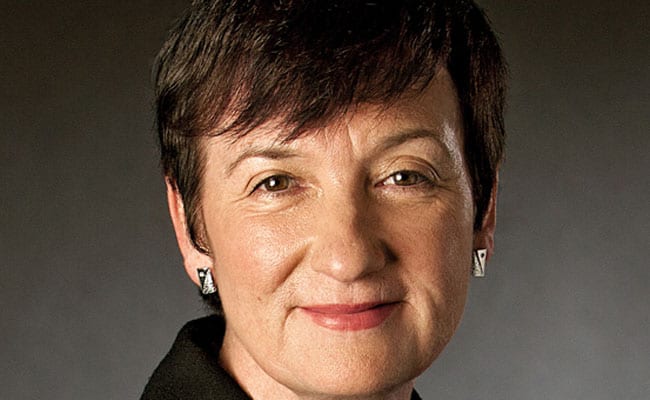The representation of women in Women’s Agenda sister publication Crikey’s annual Power 50 Index, out this week, leaves cabinet’s woeful composition for dead — but it’s still disproportionately low.
Eight women feature in the list for 2013. The Power Index chronicles the 50 most powerful people in Australian politics, business, media, sport, arts and culture as determined by a panel of Crikey experts. It’s a neat summary of who’s who and indicates where the balance of power really sits and where it may sit in the future.
The line-up of women deemed our most powerful are a diverse bunch. Unsurprisingly, politicians and political influencers dominate the female field. Tony Abbott’s chief of staff Peta Credlin leads the women who derive their power from politics. Credlin is followed by foreign minister Julie Bishop, Greens leader Christine Milne, the ALP deputy leader Tanya Plibersek and union boss Ged Kearney.
Mining magnate Gina Rinehart, Westpac chief executive Gail Kelly and Business Council of Australia chief executive Jennifer Westacott are the three corporate heavy-weights on the list.
So who are these women? We have compiled a handy guide for you to learn more.
Rank #4: Peta Credlin
Position: Prime Minister Tony Abbott’s chief-of-staff.
Friends in high places: Abbott, Brendan Nelson, Brian Loughnane (the Liberal Party’s federal director and Credlin’s husband).
Need to know: Recognised as the formidable force behind our now-PM who described her as “the smartest and the fiercest political warrior I have ever worked with”. Credlin was picked for the number four spot because of her influence over Abbott and other senior ministers. She runs Abbott’s office firmly, and is respected by all (and feared by some) within the Coalition. If Abbott’s time in the top job is a success, you can give Credlin a fair bit of the credit.
Rank #7: Gina Rinehart
Position: Executive chair of Hancock Prospecting, mining magnate and fourth richest woman in the world.
Friends in high places: Dick Smith, John Singleton, Barnaby Joyce.
Need to know: The Pilbara’s Iron Lady has been locked in an ugly legal dispute with her children about the family fortunes. Recently she has branched into the media and now holds substantial shares in both Fairfax and the Ten Network. Rinehart was tapped as our most powerful businesswoman because she is the richest person in Australia — and she has had a significant influence on government policy — remember the mining tax? Rinehart has influence over some Coalition ministers, but not all.
Rank #11: Julie Bishop
Position: Deputy leader of the Liberal Party, Foreign Minister.
Friends in high places: Kerry Stokes, Andrew Forrest.
Need to know: Before moving into politics the Adelaide-born Bishop had a highly successful legal career and was the managing partner at Clayton Utz. Bishop landed at number 11 on Crikey’s list because she’s 2IC to Abbott, and as foreign minister, is travelling the globe dealing with international affairs and trade.
Rank #20: Gail Kelly
Position: Chief executive of Westpac.
Friends in high places: Forbes magazine regularly ranks Kelly among the world’s 100 most powerful women.
Need to know: The South African-born Kelly started her career as a teacher before moving into banking in 1980. She remains the first and only female to lead one of Australia’s big four banks.
Rank #23: Christine Milne
Position: Leader of the Australian Greens, Senator for Tasmania.
Friends in high places: Bob Brown.
Need to know: took the leadership position vacated by Bob Brown last year. She remains on the list because her party still holds balance of power, until next July, and because the Greens hold quite a few positions in federal and state parliaments (and local councils). The Greens’ power will fade from next July, however, and Milne’s abilities have been questioned following a lacklustre federal election result. Will she make the list again next year?
Rank #26: Tanya Plibersek
Position: Deputy leader of the ALP.
Friends in high places: Julia Gillard, Bob Hawke.
Need to know: The popular and highly competent Plibersek may well be Australia’s second female prime minister. She’ll be closely watched to see if she has what it takes to ascend to the Labor leadership — and whether she can help turn the ALP’s fortunes around.
Rank #33: Jennifer Westacott
Position: Chief executive of the Business Council of Australia.
Friends in high places: Has the ear of senior Coalition figures.
Need to know: Westacott was a partner at KPMG where she provided advice to some of Australia’s major corporations on climate change and sustainability matters, and advised state governments on reform priorities. Westacott is very well-connected with senior Coalition figures; when she knocks on the door, they listen. A tough and respected operator.
Rank #42: Ged Kearney
Position: President of the Australian Council of Trade Unions.
Friends in high places: Dave Oliver.
Need to know: The former nurse was plucked from relative obscurity to become the public face of the union movement. She is a publican’s daughter from Melbourne and one of nine children. She is passionate about up-skilling Australian workers. As the leader of the union movement she wields some clout — even if industrial relations has largely gone quiet as a political issue.










